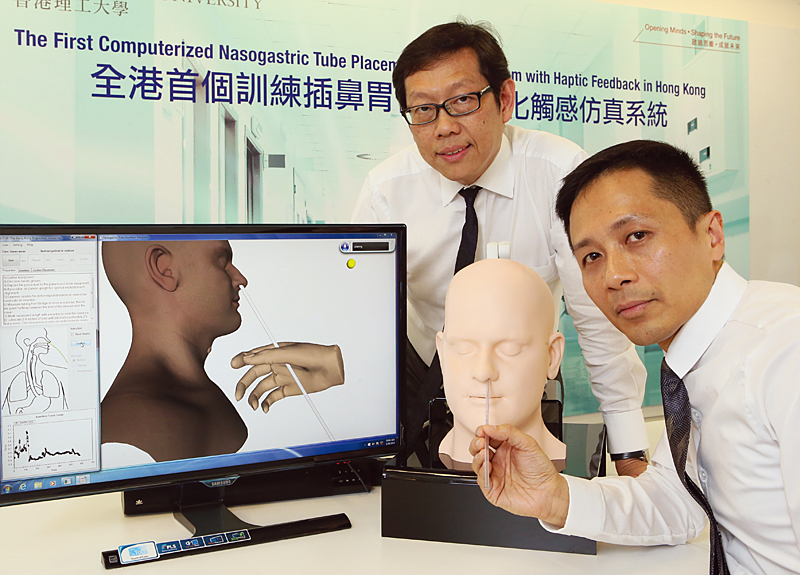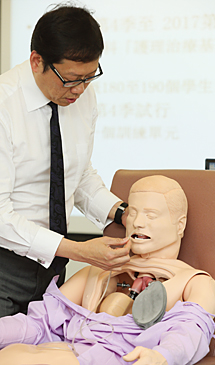
Dr Thomas Choi Kup-sze (right) and Dr Vico Chiang Chung-lim
The School of Nursing has developed Hong Kong’s first haptic system for nasogastric tube (NGT) placement training, enabling nursing students to practise NGT insertion in a computer-simulated virtual environment.
Nasogastric intubation, the insertion of a plastic tube through the nostril and throat into the stomach, is an essential clinical nursing procedure for feeding or drainage, but it is a blind process. Misplacing the tube can lead to unexpected complications or fatal incidents. Conventional skills training is usually conducted on low-fidelity mannequins that cannot respond to the trainee, render human anatomy realistically or provide an actual sense of insertion forces.
In view of this, Dr Thomas Choi Kup-sze and Dr Vico Chiang Chung-lim at the School of Nursing jointly developed a computerised haptic system that applies force models to simulate NGT insertion and provide feedback forces during NGT placement. Two methods were used to calculate the force needed – “engineering mechanics” was used for the numerical calculation of the forces between the NGT and nasogastric passage, in the same way as for structures in engineering design, and an “expert system” was used to leverage the knowledge and experience of expert nursing professionals to compute the forces. With these methods, the system can simulate the insertion forces at different locations along the nasogastric passage, together with the static and dynamic friction between the NGT and nasogastric passage during intubation.
The system can display the tube’s position in real time through a visual interface, offer interactive audio feedback such as the patient’s gag reflexes or coughing, and record the completion time and insertion force applied during the virtual NGT placement. Nursing students can thus gain more authentic experience and have a better understanding of their own performance. This system helps to improve the skills of nursing students and contributes to advancing clinical nursing education. ♦

